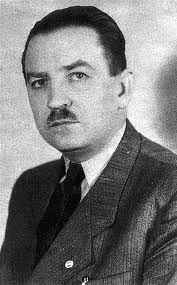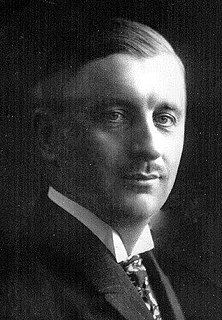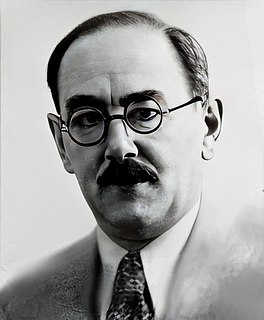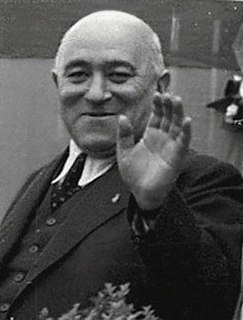 W
WIstván Bibó was a Hungarian lawyer, civil servant, politician and political theorist.
 W
WJózsef Dudás, a Hungarian politician and resistance fighter, was born in Marosvásárhely in Austria-Hungary.
 W
WFerenc Erdei was a Hungarian politician and sociologist, who served as Interior Minister in the unofficial interim government led by Béla Miklós. After the Soviet occupation of Hungary this cabinet took office officially, in March 1945.
 W
WMihály Farkas was a Hungarian Communist politician.
 W
WLajos Für was a Hungarian politician and historian, who served as Minister of Defence between 1990 and 1994. From 1994 to 1996 he was also chairman of the Hungarian Democratic Forum (MDF), the ruling conservative party led by late Prime Minister József Antall to his death in 1993.
 W
WErnő Gerő [ˈɛrnøː ˈɡɛrøː] was a Hungarian Communist Party leader in the period after World War II and briefly in 1956 the most powerful man in Hungary as the second secretary of its ruling communist party.
 W
WÁrpád Göncz was a Hungarian writer, translator, agronomist and liberal politician, who served as President of Hungary from 2 May 1990 to 4 August 2000. Göncz played a role in the Hungarian Revolution of 1956, for which he was imprisoned for six years. After his release, he worked as a translator of English-language literary works.
 W
WAndrás Hegedüs was a Hungarian Communist politician who served as Chairman of the Council of Ministers from 1955 to 1956. He fled to the Soviet Union on 28 October, the fifth day of the Hungarian Revolution of 1956, but returned in 1958 and taught sociology.
 W
WJános Kádár was a Hungarian communist leader and the General Secretary of the Hungarian Socialist Workers' Party, presiding over the country from 1956 until his retirement in 1988. His 32-year term as General Secretary covered most of the period the People's Republic of Hungary existed. Due to Kádár's age, declining health and declining political mastery, he retired as General Secretary of the party in 1988 and a younger generation consisting mostly of reformers took over.
 W
WAnna Kéthly was a Hungarian social democratic politician. Her fellow party member Vilmos Böhm called her the "Joan of Arc of Hungarian politics".
 W
WDr. Béla Király was a Hungarian army officer before, during, and after World War II. After the war, he was sentenced to life in prison under the Soviet-allied regime, but was later released. After his release, he commanded the National Guard in the 1956 Hungarian Revolution. He then fled to the United States, where he became an academic historian. He returned to Hungary after the collapse of the Soviet Bloc and was elected a member of Hungarian Parliament.
 W
WIvan Stepanovich Konev was a Soviet general and Marshal of the Soviet Union who led Red Army forces on the Eastern Front during World War II, responsible for taking much of Axis-occupied Eastern Europe.
 W
WSándor Kopácsi was a participant in, and chronicler of, the Hungarian Revolution of 1956.
 W
WBéla Kovács was a Hungarian politician, who served as Minister of Agriculture from 1945 to 1946 and in the Hungarian Revolution of 1956.
 W
WGyörgy Lukács, also Georg Bernard Baron Lukács von Szegedin, was a Hungarian Marxist philosopher, aesthetician, literary historian, and critic. He was one of the founders of Western Marxism, an interpretive tradition that departed from the Marxist ideological orthodoxy of the Soviet Union. He developed the theory of reification, and contributed to Marxist theory with developments of Karl Marx's theory of class consciousness. He was also a philosopher of Leninism. He ideologically developed and organised Lenin's pragmatic revolutionary practices into the formal philosophy of vanguard-party revolution.
 W
WPál Maléter was the military leader of the 1956 Hungarian Revolution.
 W
WJózsef Mindszenty [jo:ʒɛf mindsɛnti] was the Prince Primate, Archbishop of Esztergom, cardinal, and leader of the Catholic Church in Hungary from 2 October 1945 to 18 December 1973. According to Encyclopædia Britannica, for five decades "he personified uncompromising opposition to fascism and communism in Hungary". During World War II, he was imprisoned by the pro-Nazi Arrow Cross Party. After the war, he opposed communism and the communist persecution in his country. As a result, he was tortured and given a life sentence in a 1949 show trial that generated worldwide condemnation, including a United Nations resolution. After eight years in prison, he was freed in the Hungarian Revolution of 1956 and granted political asylum by the United States embassy in Budapest. Mindszenty lived there for the next fifteen years. He was finally allowed to leave the country in 1971. He died in exile in 1975 in Vienna, Austria.
 W
WFerenc Münnich was a Hungarian Communist politician who served as Chairman of the Council of Ministers of the People's Republic of Hungary from 1958 to 1961.
 W
WImre Nagy was a Hungarian communist politician who served as Prime Minister and Chairman of the Council of Ministers of the Hungarian People's Republic from 1953 to 1955. In 1956 Nagy became leader of the Hungarian Revolution of 1956 against the Soviet-backed government, for which he was executed two years later.
 W
WGergely Pongrátz was a famous veteran of the Hungarian Revolution of 1956. He was the commander of arguably the largest and perhaps the best-known group of freedom fighters, at the Uprising's strongest and most lengthy point of resistance, Budapest's Corvin Passage ; between 1 and 9 November 1956. Under his command, the Corvin Passage fighters destroyed Soviet armored vehicles, and resisted several waves of assault. Following the conflict, Pongrátz escaped capture and by 1957 had moved to the United States where he spent the majority of his exile until returning to Hungary in 1991. During his exile he was elected both Vice-Chairman and then Chairman of the Hungarian Freedom Fighters' Association.
 W
WGrigore Preoteasa was a Romanian communist activist, journalist, and politician, who served as Communist Romania's Minister of Foreign Affairs between October 4, 1955 and the time of his death.
 W
WSándor Rácz was a Hungarian politician.
 W
WMátyás Rákosi [ˈmaːcaːʃ ˈraːkoʃi] was a Hungarian communist politician. He was born Mátyás Rosenfeld in Ada. Rákosi was the leader of Hungary's communist party from 1945 to 1956 — first as General Secretary of the Hungarian Communist Party (1945–48) and later holding the same post with the Hungarian Working People's Party (1948–56). As such, from 1947–56, he was the de facto ruler of Communist-ruled Hungary.
 W
WBéla Turi-Kovács is a Hungarian politician, who served as Minister of Environment between 2000 and 2002. He is a member of the National Assembly since 1998. He is the Father of the House since 2014 thus he opened the inaugural sessions of the National Assembly in 2014 and 2018.
 W
WTristan Tzara was a Romanian and French avant-garde poet, essayist and performance artist. Also active as a journalist, playwright, literary and art critic, composer and film director, he was known best for being one of the founders and central figures of the anti-establishment Dada movement. Under the influence of Adrian Maniu, the adolescent Tzara became interested in Symbolism and co-founded the magazine Simbolul with Ion Vinea and painter Marcel Janco. During World War I, after briefly collaborating on Vinea's Chemarea, he joined Janco in Switzerland. There, Tzara's shows at the Cabaret Voltaire and Zunfthaus zur Waag, as well as his poetry and art manifestos, became a main feature of early Dadaism. His work represented Dada's nihilistic side, in contrast with the more moderate approach favored by Hugo Ball.
 W
WMária Wittner is a Hungarian revolutionary and politician who participated in the Hungarian Revolution of 1956.